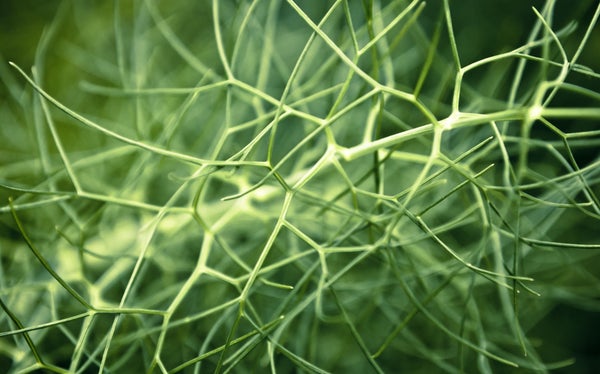Each year doctors diagnose approximately 60,000 Americans with Parkinson’s disease, an incurable neurodegenerative condition for which the number-one risk factor is age. Worldwide an estimated seven to 10 million people currently live with the malady. As U.S. and global populations grow older, it is becoming increasingly urgent to understand its causes.
So far, researchers know that Parkinson’s involves cell death in a few restricted areas of the brain including the substantia nigra (SNc), one of two big cell clusters in the midbrain that house a large population of dopamine neurons. These cells release dopamine and are involved in a variety of functions including reward processing and voluntary movement. Their death leads to the motor control and balance issues that are core symptoms of the disease.
New research shows that these brain cells, most at risk in Parkinson’s disease, require unusually high amounts of energy to carry out their tasks because of their highly branched structures. Like a massive car with an overheating engine, these neurons are susceptible to burnout and early death. This discovery emerged from a comparison of energy use in nigral dopamine neurons and in similar neurons found in the nearby ventral tegmental area (VTA), also in the midbrain. “We were trying to understand why dopamine neurons of the substantia nigra die in Parkinson’s disease patients while there are so many other brain cells that have no problem at all,” says Louis-Eric Trudeau, a neuroscientist at the University of Montreal and senior author of the study published in the August 27 Current Biology.
On supporting science journalism
If you're enjoying this article, consider supporting our award-winning journalism by subscribing. By purchasing a subscription you are helping to ensure the future of impactful stories about the discoveries and ideas shaping our world today.
Although located nearly side by side, neurons in the SNc expended much larger amounts of energy than those in the VTA, and their mitochondria, the structures that create energy in cells, continuously worked at maximum capacity. On further examination, the researchers found that the huge demand of these energy-guzzling cells stemmed from the fact that they are about twice the size of their neighbors in the VTA. SNc neurons also have many more axonal extensions. Like a tree with many branches, the larger neurons require more energy to survive and carry out their functions.
When the experimenters reduced this branching by adding semaphorin, an axonal guidance protein that inhibits neural growth, it reduced mitochondrial activity, energy expenditure and vulnerability in these neurons. Unfortunately, such an approach would compromise surviving neurons, which need to increase their branching, especially in aging brains, to take over and replenish dopamine stores.
The hypothesis that extensive axonal branching contributes to the vulnerability of dopamine neurons implicated in Parkinson’s has been suggested in the past, but this is the first study that puts these claims to the test—in the lab at least. It remains to be seen if the findings also can be obtained in living animals, says André Parent, a professor at Laval University who studies neurodegenerative diseases and was not involved in the study.
All of us lose dopamine neurons as we age. This is not a problem for most people because as neurons are lost, other surviving ones take over. In some individuals, however, a “critical threshold” of neural loss is reached and the remaining cells are no longer able to compensate. “Parkinson’s is a multiple-hit disease,” Trudeau says. “To develop the disease, you need a few things: the aging process and a mutation or exposure to environmental toxins. Perhaps all of us have neurons that are at risk that will eventually die in older age. But we don’t have that second ‘hit’ that will increase the stress on these cells, leading to the development of the disease.” The large dopamine cells in the substantia nigra need extra energy to run, and this chronically elevated stress makes them more vulnerable to gene mutations, environmental effects and aging, all of which might be why they are some of the first to die off.
Trudeau and his team are now looking to use the findings from this discovery to improve rodent models of Parkinson’s disease so that they are better able to mimic what happens in the primate brain. Because such brains are bigger, dopamine neurons have more territory to cover, likely requiring them to make more connections and expend more energy. Currently, scientists are not even sure that rats or mice develop Parkinson’s at all, and it might be because their cells are too small. Future studies will hopefully reveal exactly how much size matters in brain.
